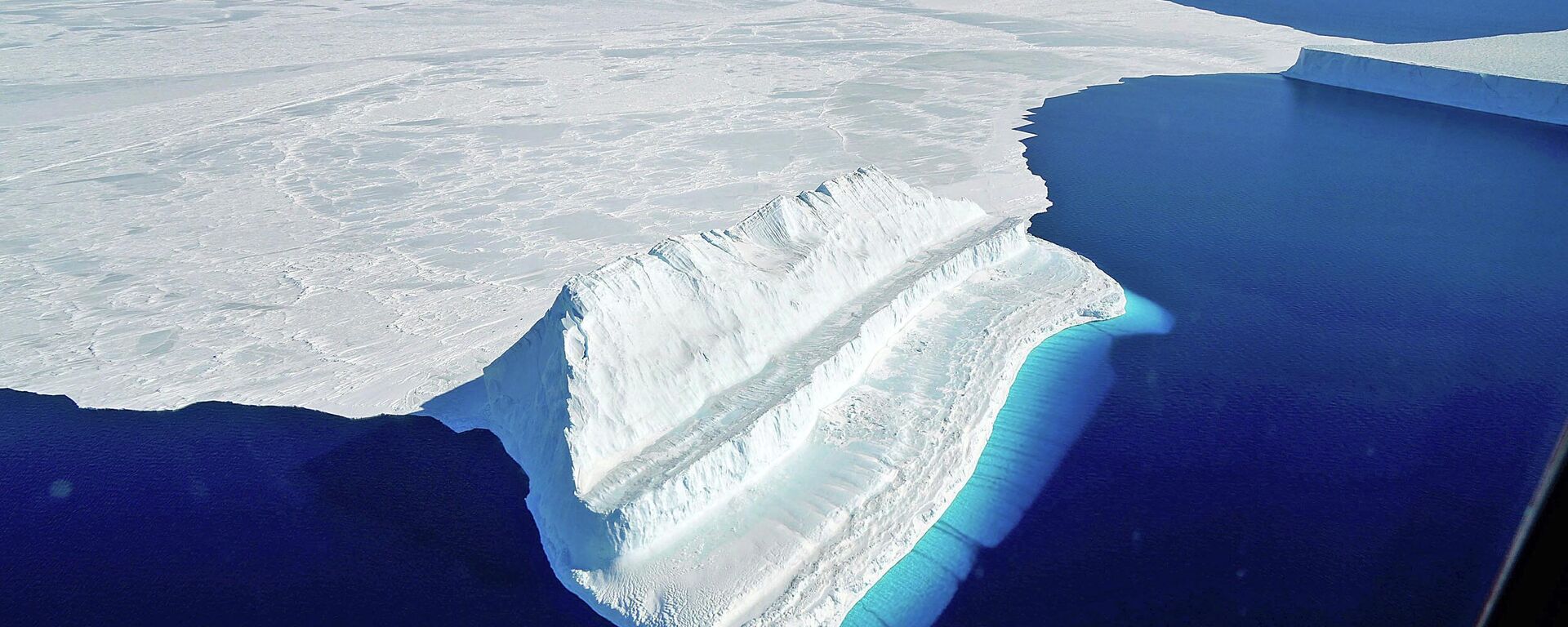https://sputniknews.in/20231218/india-becomes-fourth-country-to-man-arctic-research-station-year-round-5875440.html
India Becomes Fourth Country to Man Arctic Research Station Year-Round
India Becomes Fourth Country to Man Arctic Research Station Year-Round
Sputnik India
Four Indian scientists are due to set off to India's Himadri Arctic research station in Norway as part of efforts to keep it manned all year round.
2023-12-18T17:54+0530
2023-12-18T17:54+0530
2023-12-18T18:49+0530
science & tech
science & tech
india
norway
spitsbergen
snowfall
cargo ship
strategic partnership
government of india
https://cdn1.img.sputniknews.in/img/07e7/0c/12/5877432_0:0:1501:844_1920x0_80_0_0_a48738cd700b34d4dcbc613a35d6546d.jpg
Four Indian scientists are due to set off to India's Himadri Arctic research station in Norway as part of efforts to keep it manned all year round.Earth Sciences Minister Kiren Rijuju flagged India's first-ever winter expedition to the Himadri research station in Ny-Alesund on the Brogger peninsula in Svalbard, Norway, on Monday. Research institutes from ten countries have laboratories in the region.Ny-Alesund is the world's northernmost settlement at 79 degrees north latitude in the north-western region of Spitsbergen, Svalbard.Why Are Artic Expeditions Gaining Interest?The Arctic is coldest during February when the average temperature is around -14 degrees and hottest in June when the temperature is around five degrees Celsius. The polar region has no indigenous human inhabitants; however, research in this region is collectively done by countries mostly bound by a common treaty.Due to their unique geographical location, these stations have been a huge success for research, especially in astrophysics, astronomy, climate issues, and environmental concern-related studies, including the role of precipitation on climate change, the characterization of radio frequency environment and the role of aerosols on climate change.In the last 100 years, Arctic temperatures have risen by four degrees. If the region continues to warm up at this rate, it may go ice-free around the 2040s, sparking a race to dominate the region and use its natural resources.Indian scientists visited the International Arctic Research Facilities at Ny-Ålesund first in 2007. Following a successful visit in 2008, the Himadri research station was established. It is currently manned only for only 180 days a year.
https://sputniknews.in/20230812/india-to-get-its-first-polar-research-vessel-ready-in-next-5-years-3558213.html
india
norway
spitsbergen
Sputnik India
feedback.hindi@sputniknews.com
+74956456601
MIA „Rossiya Segodnya“
2023
Deexa Khanduri
https://cdn1.img.sputniknews.in/img/07e6/0c/13/138923_52:0:533:481_100x100_80_0_0_cadf23d341691fc65ff2b22fd1afe584.jpg
Deexa Khanduri
https://cdn1.img.sputniknews.in/img/07e6/0c/13/138923_52:0:533:481_100x100_80_0_0_cadf23d341691fc65ff2b22fd1afe584.jpg
News
en_IN
Sputnik India
feedback.hindi@sputniknews.com
+74956456601
MIA „Rossiya Segodnya“
Sputnik India
feedback.hindi@sputniknews.com
+74956456601
MIA „Rossiya Segodnya“
Deexa Khanduri
https://cdn1.img.sputniknews.in/img/07e6/0c/13/138923_52:0:533:481_100x100_80_0_0_cadf23d341691fc65ff2b22fd1afe584.jpg
polar polar research vessel (prv), antarctica, union earth sciences minister kiren rijiju, kiren rijiju, upper house of parliament, prv proposal, indian navy, polar waters, ny-alesud town, brogger peninsula, himadri research station, svalbard, norway.
polar polar research vessel (prv), antarctica, union earth sciences minister kiren rijiju, kiren rijiju, upper house of parliament, prv proposal, indian navy, polar waters, ny-alesud town, brogger peninsula, himadri research station, svalbard, norway.
India Becomes Fourth Country to Man Arctic Research Station Year-Round
17:54 18.12.2023 (Updated: 18:49 18.12.2023) Deexa Khanduri
Sputnik correspondent
The Himadri Arctic research station in Norway is currently manned only half the year, but further attention could increase the scientific discoveries on offer.
Four Indian scientists are due to set off to India's Himadri Arctic research station in Norway as part of efforts to keep it manned all year round.
Earth Sciences Minister Kiren Rijuju flagged India's first-ever winter expedition to the Himadri research station in Ny-Alesund on the Brogger peninsula in Svalbard, Norway, on Monday. Research institutes from ten countries have laboratories in the region.
With this, India's Himadri will be only the fourth research station in the Arctic to be crewed around the year.
Ny-Alesund is the world's northernmost settlement at 79 degrees north latitude in the north-western region of Spitsbergen, Svalbard.
"When I saw our Himadri station in the Arctic, I realized that we have potential and people trust us. The Norwegian Polar Institute people also had shown lots of faith in Indian scientists, they expect that India will make substantial contributions to climate science," Union Minister of Earth Sciences Kiren Rijiju said, who made a two-day trip to Himadri research station in June this year.
Why Are Artic Expeditions Gaining Interest?
The Arctic is coldest during February when the average temperature is around -14 degrees and hottest in June when the temperature is
around five degrees Celsius. The polar region has no indigenous human inhabitants; however, research in this region is collectively done by countries mostly bound by a common treaty.
Due to their unique geographical location, these stations have been a huge success for research, especially in astrophysics, astronomy, climate issues, and environmental concern-related studies, including the role of precipitation on climate change, the characterization of radio frequency environment and the role of aerosols on climate change.
In the last 100 years, Arctic temperatures have risen by four degrees. If the region continues to warm up at this rate, it may go ice-free around the 2040s, sparking a race to dominate the region and use its natural resources.
Indian scientists visited the
International Arctic Research Facilities at Ny-Ålesund first in 2007. Following a successful visit in 2008, the Himadri research station was established. It is currently manned only for only 180 days a year.



